🔍 Top 10 Smart Tips to Remove Objects from the Ear — Safely and Without Panic!
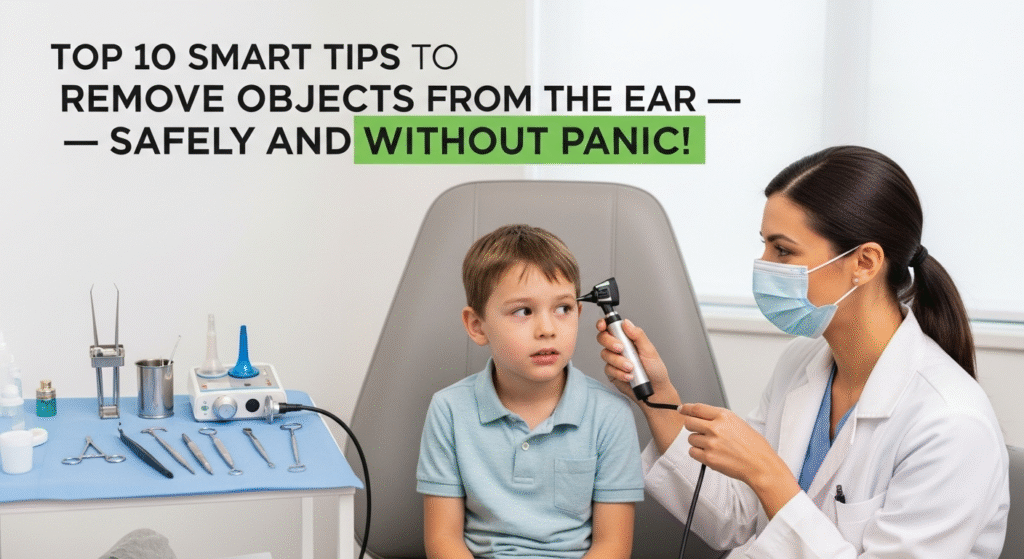
Finding something stuck inside your ear can be scary — whether it’s a tiny bead, an insect, or even a piece of cotton. But the key is to stay calm and follow safe methods. Panicking or poking blindly can make things worse. That’s why we’ve put together 10 smart and safe tips you can follow at home before rushing to a doctor.
✅ Tip 1: Stay Calm and Keep Still
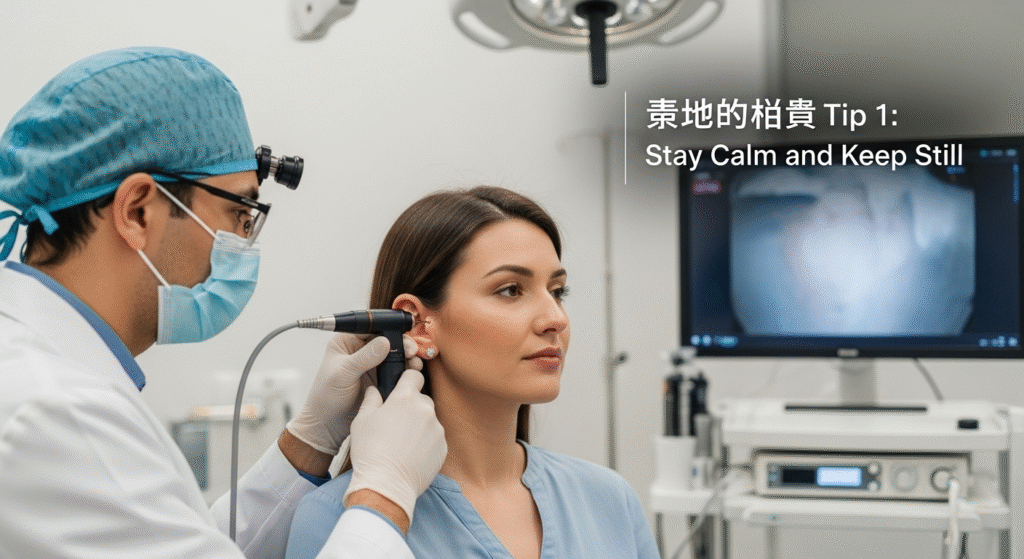
Visual Title for Whisk AI: “A person sitting calmly, holding their ear, looking relaxed, no panic”
When something is in your ear, the first rule is don’t panic. Take a deep breath, sit still, and avoid pushing your finger inside. Staying calm prevents the object from moving deeper.
✅ Tip 2: Tilt Your Head Gently
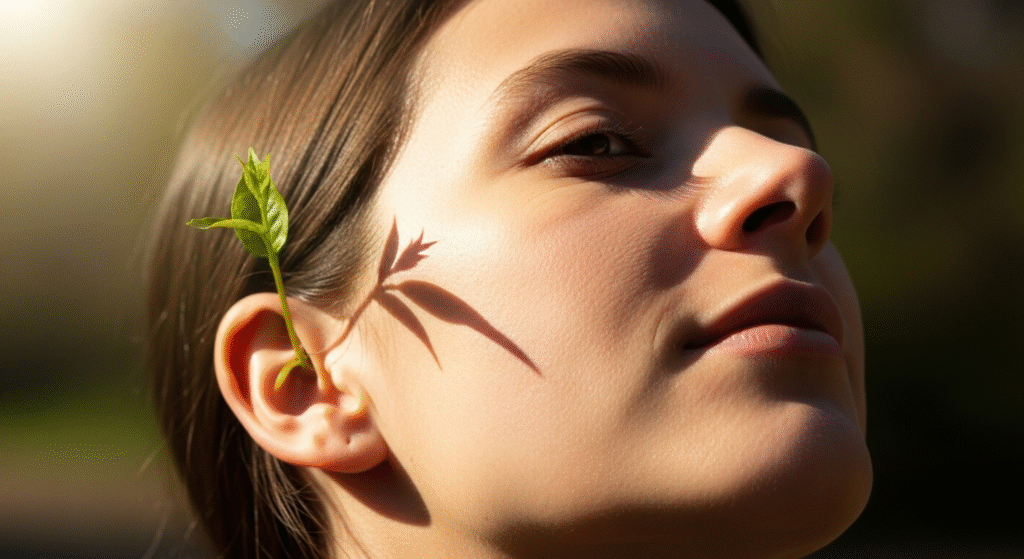
Visual Title for Whisk AI: “A person tilting their head sideways with an ear facing down”
Sometimes, gravity does the trick. Tilt your head to the side so the affected ear is facing downward, and gently shake — the object may fall out on its own.
✅ Tip 3: Use Gravity with Gentle Taps
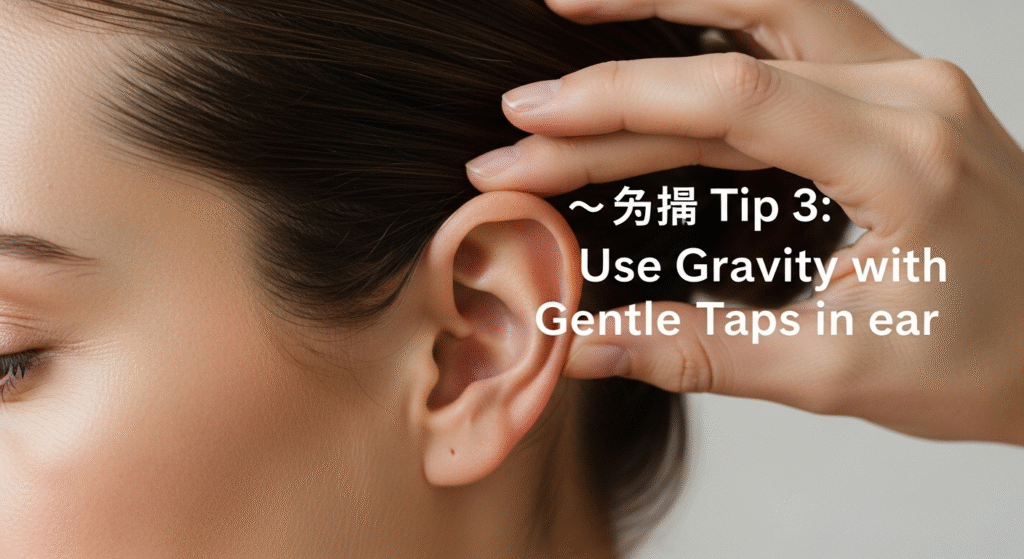
Visual Title for Whisk AI: “A person gently tapping the side of their head with hand near ear”
After tilting, tap lightly on the opposite side of your head. This can help the object slide out naturally without tools.
✅ Tip 4: Try Ear Drops or Mineral Oil
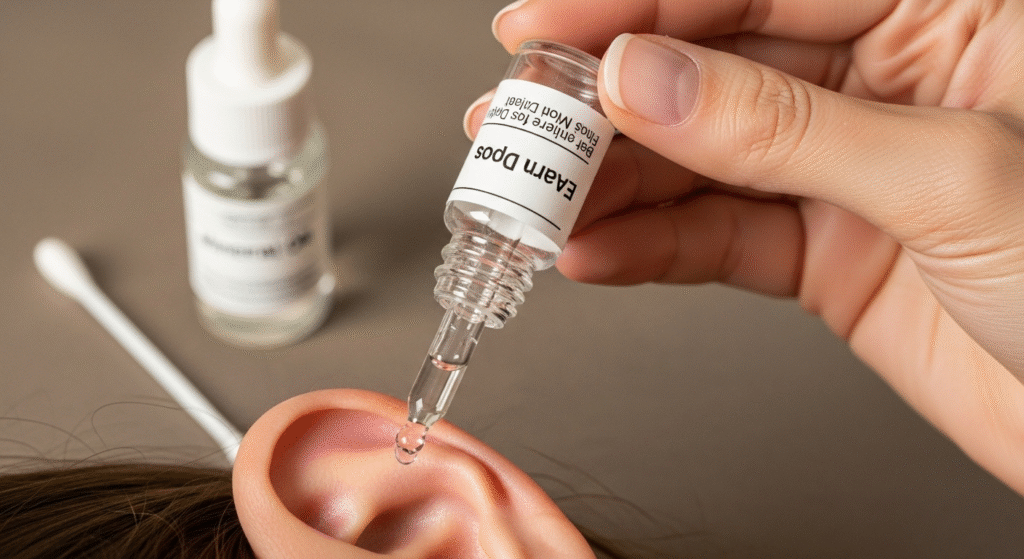
Visual Title for Whisk AI: “Hand holding a dropper bottle dropping liquid into an ear”
If it’s a small insect inside, place a few drops of baby oil, mineral oil, or warm (not hot) water. This will float the insect out or kill it, making it easier to remove.
✅ Tip 5: Avoid Cotton Swabs and Sharp Tools
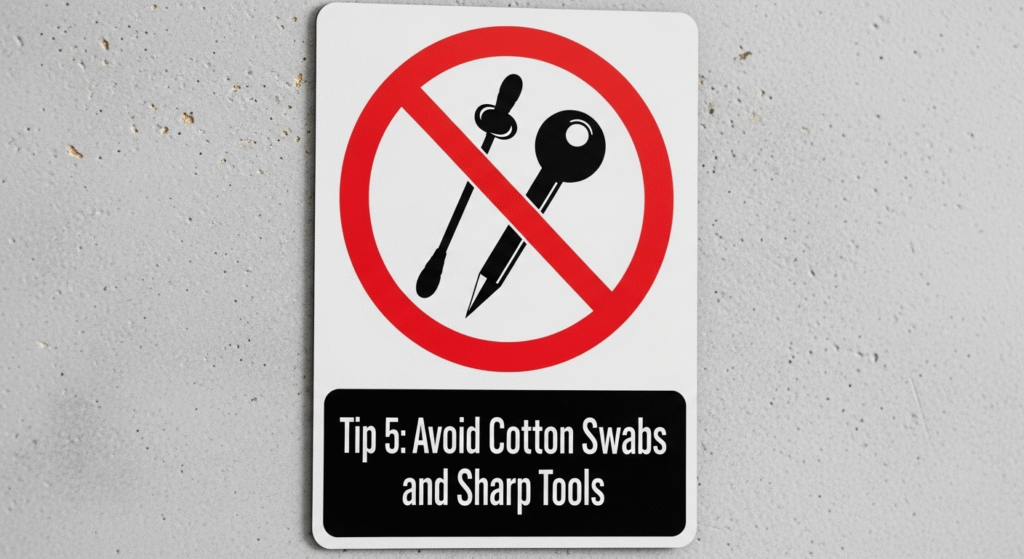
Visual Title for Whisk AI: “A red cross sign over cotton swab and sharp objects near ear”
Never use cotton swabs, hairpins, or sharp objects to dig inside. They can push the object deeper or damage your eardrum.
✅ Tip 6: Try Gentle Ear Irrigation
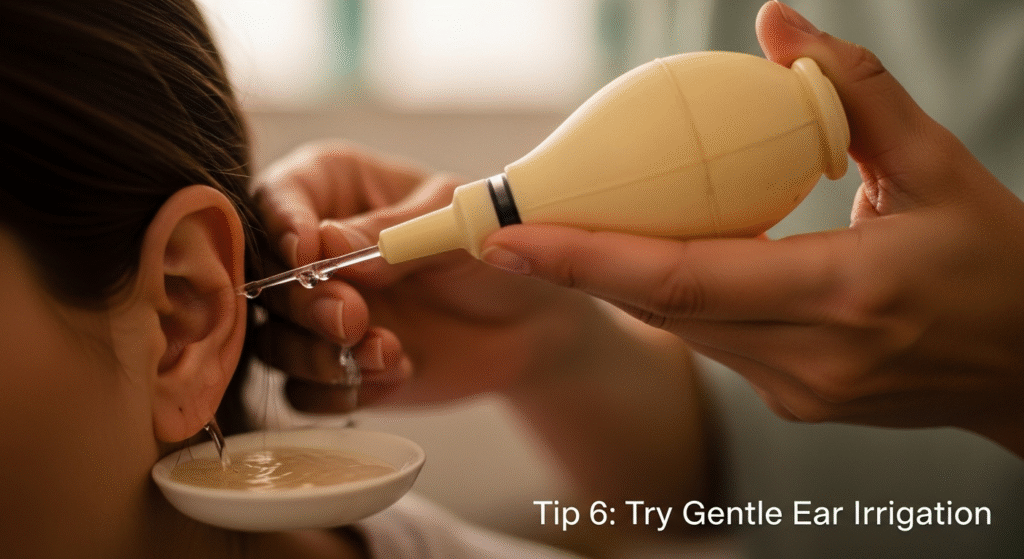
Visual Title for Whisk AI: “A doctor-style syringe with water stream going gently into an ear”
If it’s something like food particles or small dirt, you can use a bulb syringe with warm water to flush it out. But only if you’re sure your eardrum isn’t damaged.
✅ Tip 7: Use Tweezers Only for Visible Objects
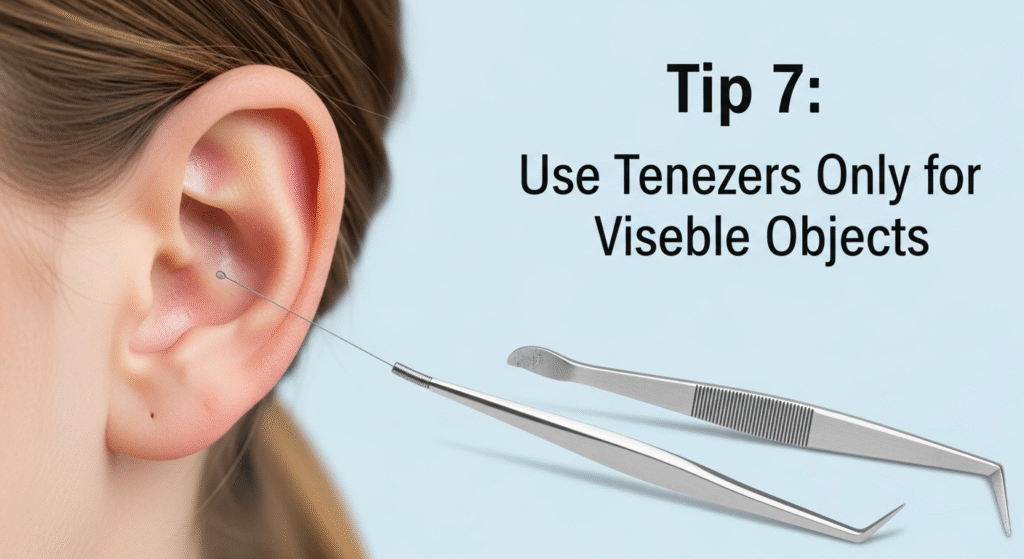
Visual Title for Whisk AI: “Hand holding tweezers carefully removing bead from outer ear”
If you can clearly see the object near the opening, use sterilized tweezers to pull it out slowly. If it’s deep inside — don’t attempt this.
✅ Tip 8: Get Someone’s Help
Visual Title for Whisk AI: “A family member using flashlight to look inside another person’s ear”
Ask a friend or family member to shine a flashlight and check. Sometimes, with a clear view, they can help you remove it safely.
✅ Tip 9: Watch for Warning Signs
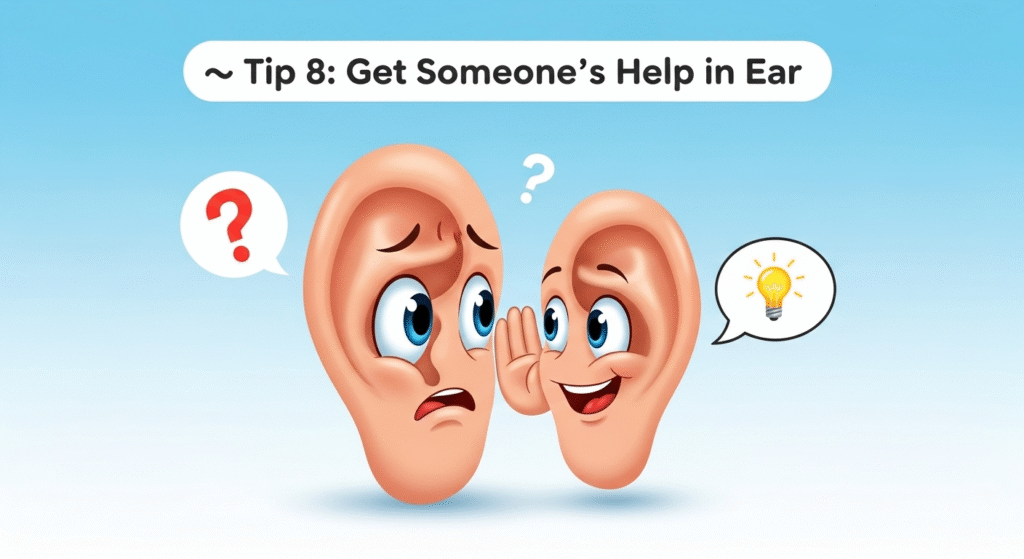
Visual Title for Whisk AI: “Person holding ear in pain, with alert sign symbol”
If you feel severe pain, bleeding, dizziness, or hearing loss, stop home remedies immediately. These are signs of possible injury.
✅ Tip 10: Seek Medical Help Immediately
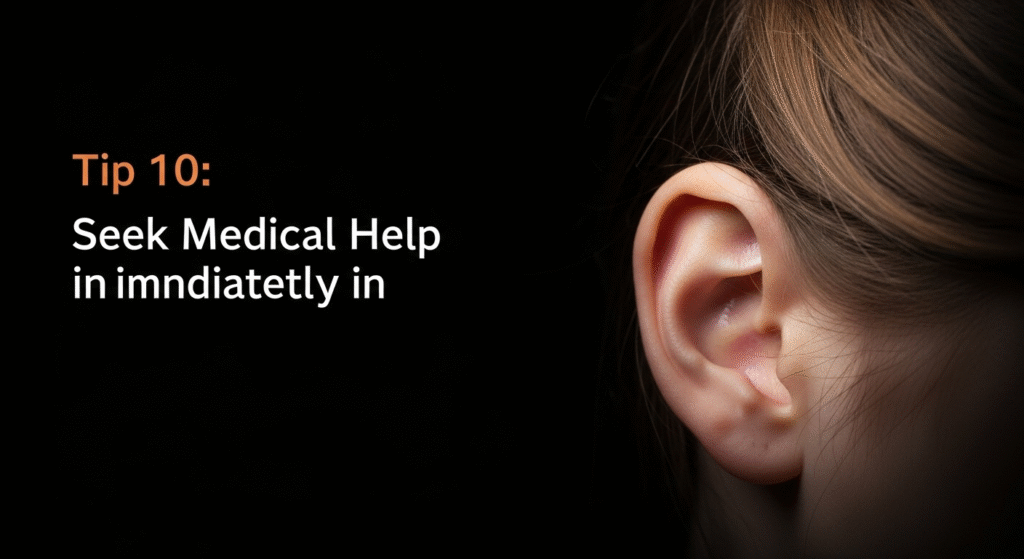
Visual Title for Whisk AI: “Doctor examining a patient’s ear with otoscope in clinic”
If nothing works or the object is sharp, stuck deep, or causing pain — go to a doctor. ENT specialists have proper tools to remove it safely without damage.
📝 Final Words
Ear emergencies can happen anytime, especially with kids. The golden rule is: stay calm, don’t poke blindly, and know when to stop and call a doctor. These 10 smart tips will help you handle the situation safely and without panic.
Intro:
The soft lower part of the ear – your earlobe – might look harmless, but when infection strikes, it can quickly turn into a swollen, red, and painful nightmare. Whether caused by piercings, bacterial growth, or trapped dirt, an earlobe infection needs quick attention before it spreads or causes serious damage. In this detailed guide, we’re uncovering the 10 most effective ways to treat, soothe, and prevent earlobe infections — from medical solutions to natural remedies.
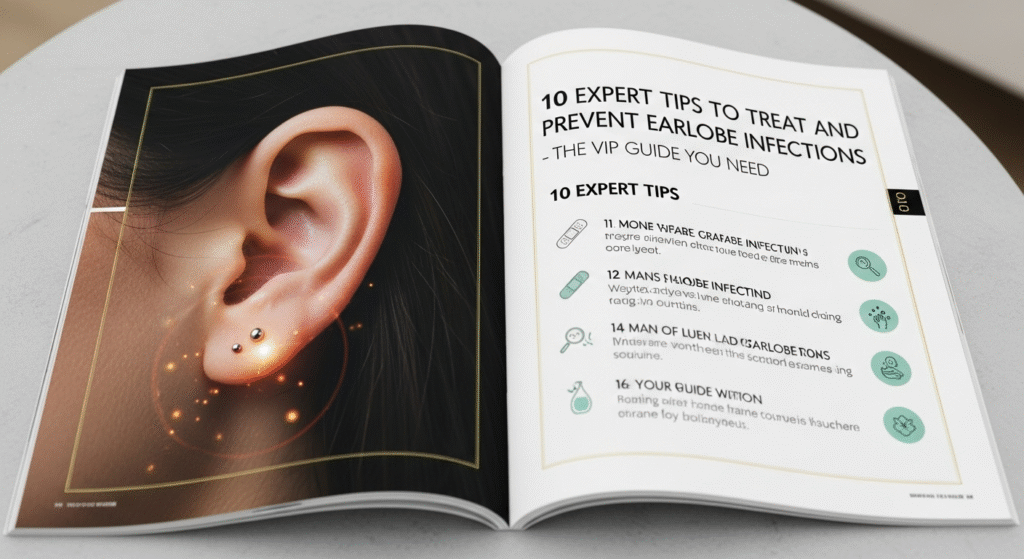
1. Clean the Area Twice Daily with Antiseptic Solution
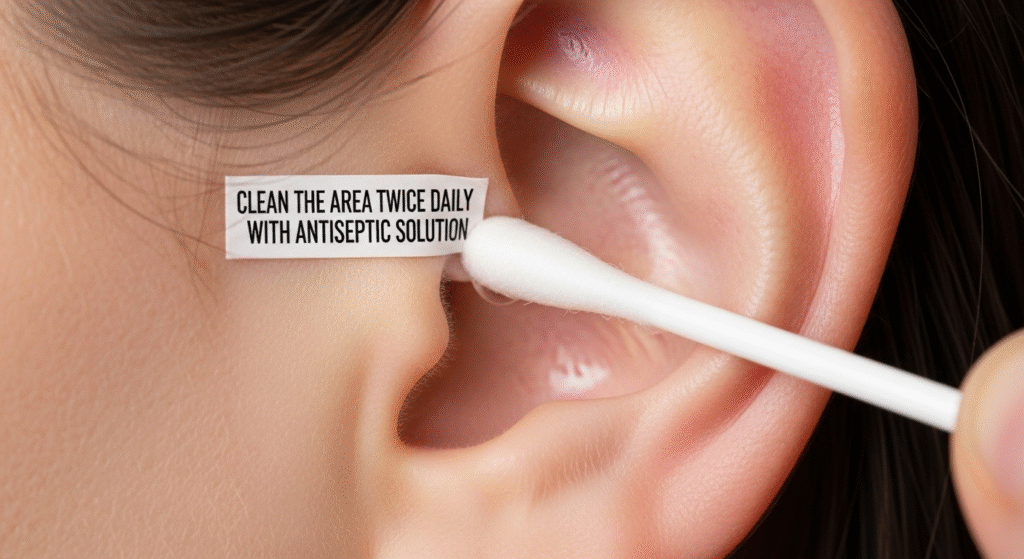
Bacteria thrive in warm, moist areas, and an infected earlobe is the perfect breeding ground. Use a mild antiseptic solution (chlorhexidine or saline) twice a day. Avoid using harsh alcohol that can dry and crack the skin.
2. Apply a Warm Compress to Reduce Swelling
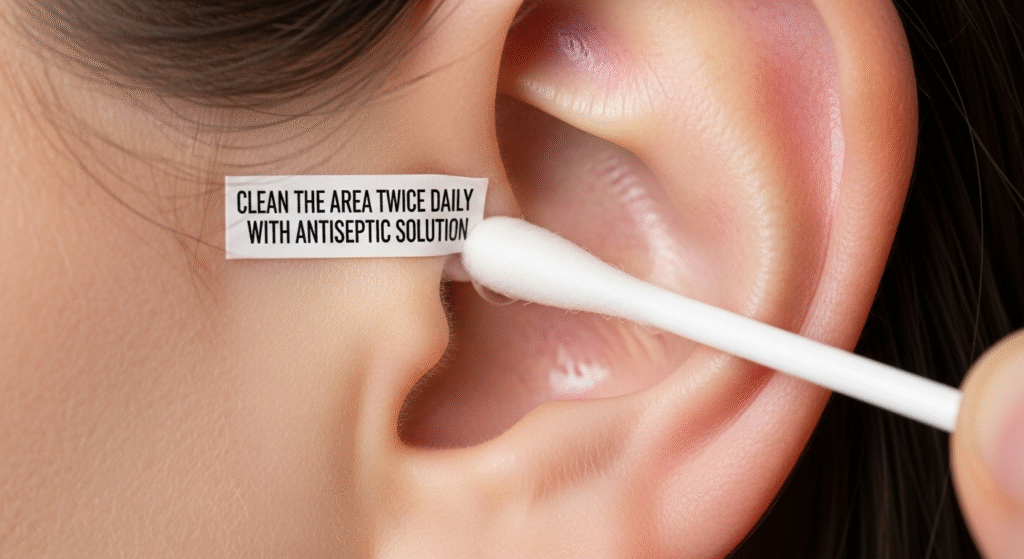
A warm compress not only soothes pain but also boosts blood flow, helping your body’s natural defense fight the infection faster. Apply for 10–15 minutes, three times a day.
3. Use an Antibiotic Ointment
Over-the-counter antibiotic creams like Neosporin can prevent bacterial spread. Gently apply a thin layer after cleaning the infected area.
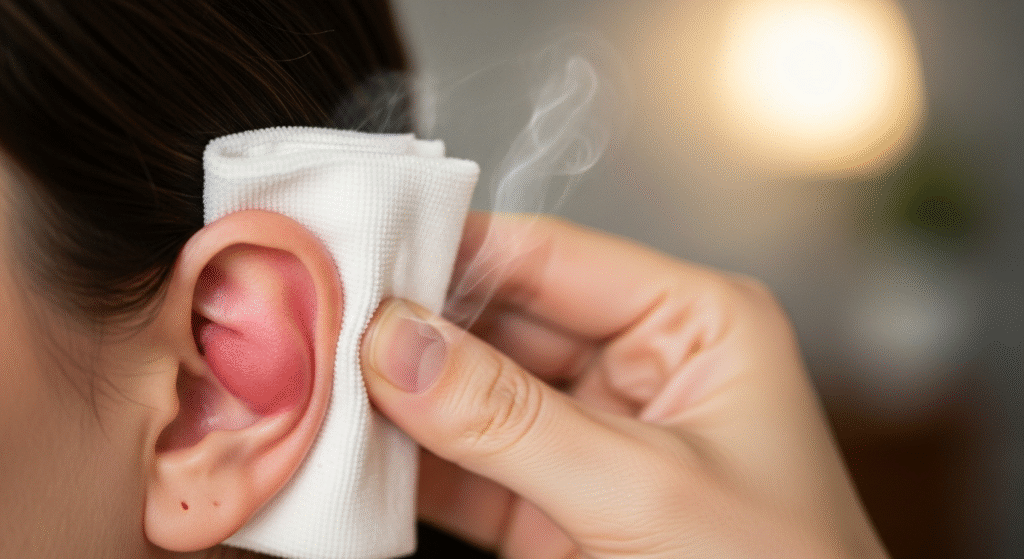
Over-the-counter antibiotic creams like Neosporin can prevent bacterial spread. Gently apply a thin layer after cleaning the infected area.
4. Avoid Touching or Pulling the Earlobe
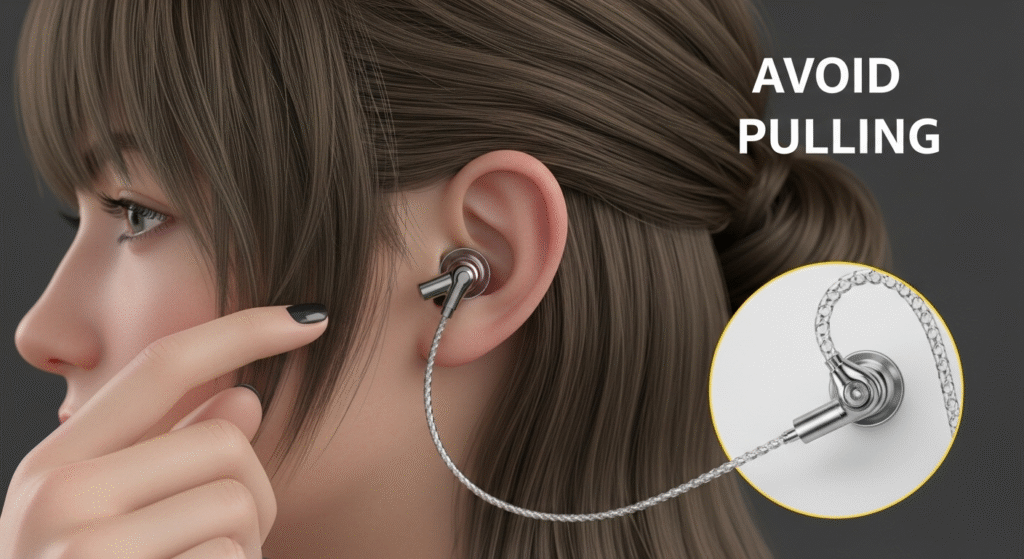
Hands carry germs. Constant touching, pulling, or fiddling with earrings can worsen the infection and delay healing.
5. Remove Earrings Until Fully Healed
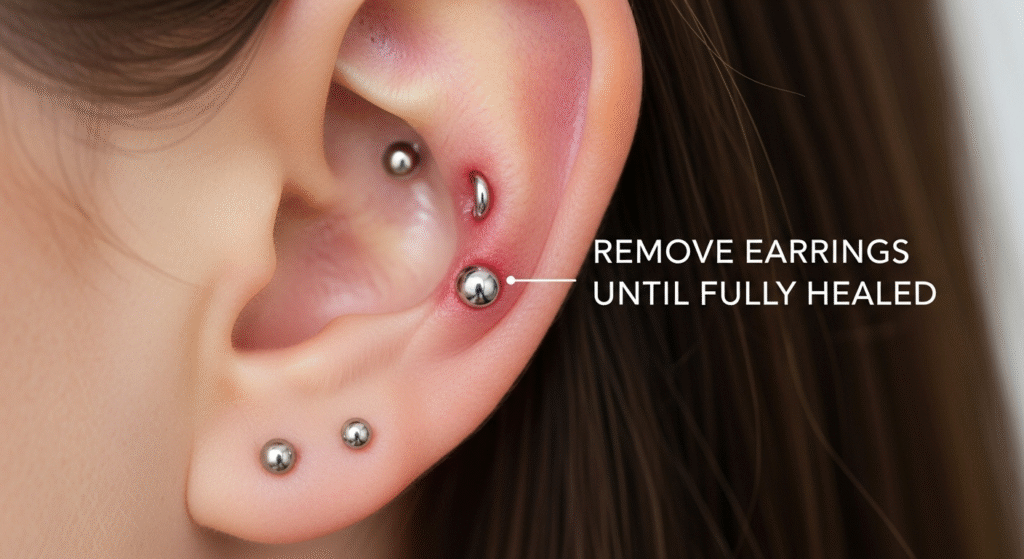
If the infection is caused by piercing, remove the jewelry temporarily to avoid trapping bacteria. Clean the piercing hole daily to prevent closure.
6. Keep the Area Dry

Moisture slows healing and encourages bacterial growth. After showers or sweating, gently pat the area dry with a clean tissue or cotton pad.
7. Try Natural Remedies for Extra Relief
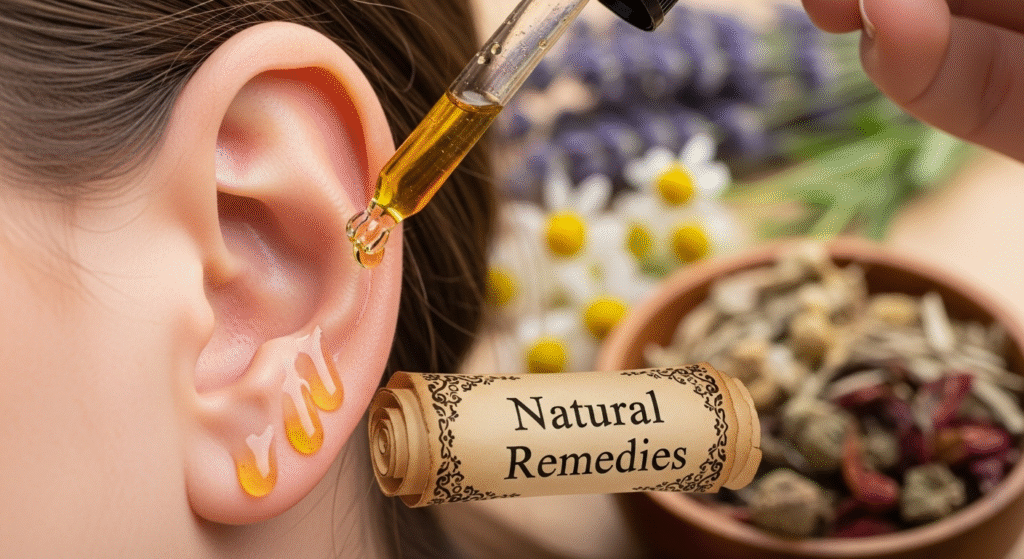
A drop of tea tree oil diluted in coconut oil can help fight bacteria and reduce inflammation. Aloe vera gel also works well for cooling and calming the infection.
8. Boost Your Immune System

Healing starts from within. Eat foods rich in Vitamin C, zinc, and protein to strengthen your body’s infection-fighting abilities.
9. Monitor for Signs of Serious Infection
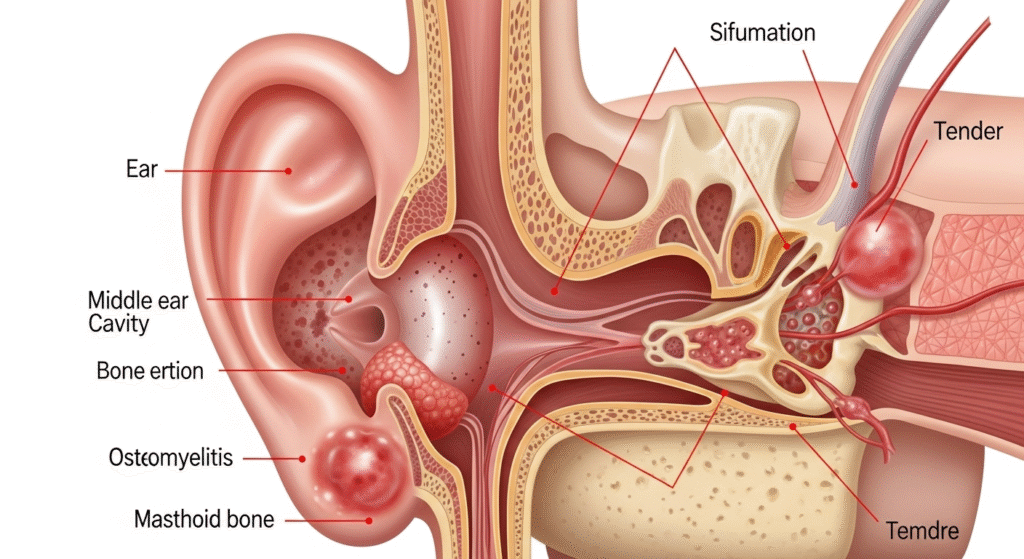
If redness spreads, pus increases, or fever develops, it’s a sign the infection might be moving deeper — seek medical attention immediately.
10. Prevent Future Infections
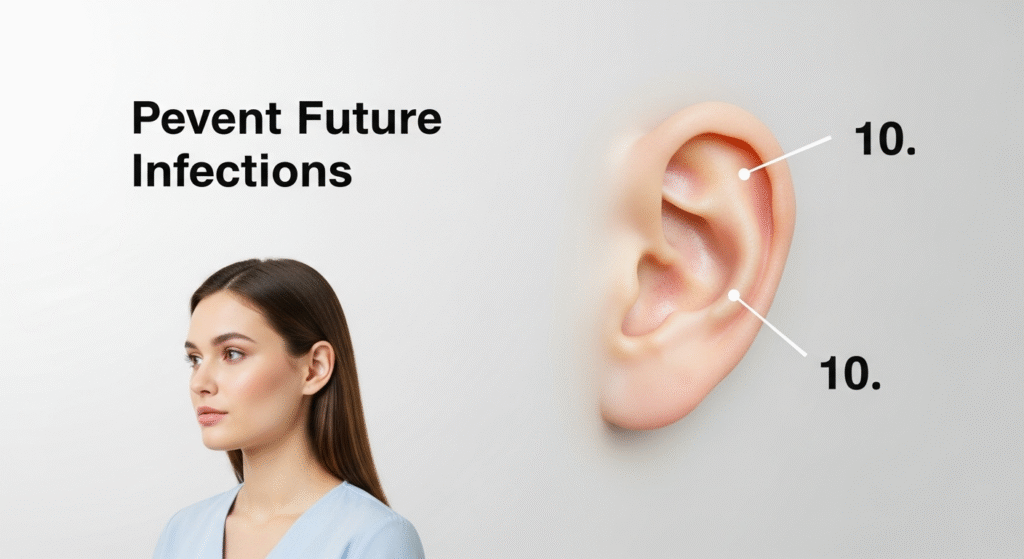
Always clean new piercings properly, avoid sharing earrings, and disinfect them before wearing. Prevention is always easier than treatment.
Final Words:
An infected earlobe can be painful and unsightly, but with the right care, it’s completely treatable. Act quickly, follow these tips, and you’ll be back to wearing your favorite earrings without worry.
